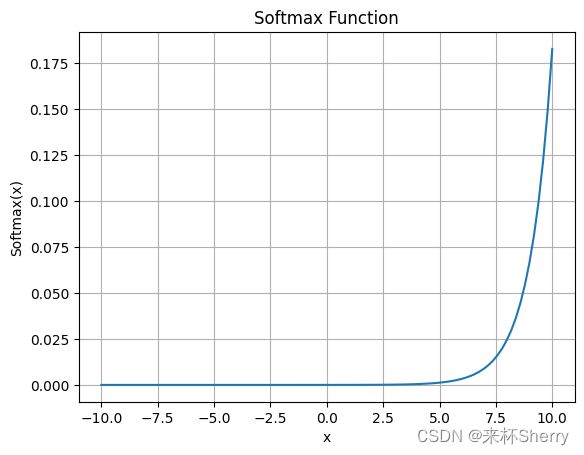线性神经网络——softmax 回归随笔【深度学习】【PyTorch】【d2l】
文章目录
-
- 3.2、softmax 回归
-
- 3.2.1、softmax运算
- 3.2.2、交叉熵损失函数
- 3.2.3、PyTorch 从零实现 softmax 回归
- 3.2.4、简单实现 softmax 回归

3.2、softmax 回归
3.2.1、softmax运算
softmax 函数是一种常用的激活函数,用于将实数向量转换为概率分布向量。它在多类别分类问题中起到重要的作用,并与交叉熵损失函数结合使用。
y ^ = s o f t m a x ( o ) 其中 y ^ i = e x p ( o j ) ∑ k e x p ( o k ) \hat{y} = softmax(o) \ \ \ \ \ 其中\ \ \ \ \hat{y}_i = \frac{exp(o_j)}{\sum_{k}exp(o_k)} y^=softmax(o) 其中 y^i=∑kexp(ok)exp(oj)
其中,O为小批量的未规范化的预测, Y ^ \hat{Y} Y^w为输出概率,是一个正确的概率分布【 ∑ y i = 1 \sum{y_i} =1 ∑yi=1 】
3.2.2、交叉熵损失函数
通过测量给定模型编码的比特位,来衡量两概率分布之间的差异,是分类问题中常用的 loss 函数。
H ( P , Q ) = − Σ P ( x ) ∗ l o g ( Q ( x ) ) H(P, Q) = -Σ P(x) * log(Q(x)) H(P,Q)=−ΣP(x)∗log(Q(x))
真实概率分布是从哪里得知的?
真实标签的概率分布是由数据集中的标签信息提供的,通常使用单热编码表示。
softmax() 如何与交叉熵函数搭配的?
softmax 函数与交叉熵损失函数常用于多分类任务中。softmax 函数用于将模型输出转化为概率分布形式,交叉熵损失函数用于衡量模型输出概率分布与真实标签的差异,并通过优化算法来最小化损失函数,从而训练出更准确的分类模型。
3.2.3、PyTorch 从零实现 softmax 回归
(非完整代码)
#在 Notebook 中内嵌绘图
%matplotlib inline
import torch
import torchvision
from torch.utils import data
from torchvision import transforms
from d2l import torch as d2l
#,将图形显示格式设置为 SVG 格式,以在 Notebook 中以矢量图形的形式显示图像。这有助于提高图像的清晰度和可缩放性。
d2l .use_svg_display()
在线下载数据集 Fashion-MNIST
#将图像数据转换为张量形式
trans = transforms.ToTensor()
mnist_train = torchvision.datasets.FashionMNIST(root="../data"
,train=True,transform=trans,download=True)
mnist_test = torchvision.datasets.FashionMNIST(root="../data"
,train=False,transform =trans,download=True)
len(mnist_train),len(mnist_test)
绘图(略)
读取小批量数据集
batch_size = 256
def get_dataloader_workers():
"""使用4进程读取"""
return 4
train_iter = data.DataLoader(mnist_train,batch_size,shuffle=True,
num_workers=get_dataloader_workers())
timer = d2l.Timer()
for X,y in train_iter:
continue
print(f'{timer.stop():.2f}sec')
定义softmax操作
def softmax(X):
X_exp = torch.exp(X)
partition = X_exp.sum(1, keepdim=True)
return X_exp / partition # 这里应用了广播机制
定义损失函数
def cross_entropy(y_hat, y):
return - torch.log(y_hat[range(len(y_hat)), y])
cross_entropy(y_hat, y)
分类精度
def accuracy(y_hat, y): #@save
"""计算预测正确的数量"""
if len(y_hat.shape) > 1 and y_hat.shape[1] > 1:
y_hat = y_hat.argmax(axis=1)
cmp = y_hat.type(y.dtype) == y
return float(cmp.type(y.dtype).sum())
评估
def evaluate_accuracy(net, data_iter): #@save
"""计算在指定数据集上模型的精度"""
if isinstance(net, torch.nn.Module):
net.eval() # 将模型设置为评估模式
metric = Accumulator(2) # 正确预测数、预测总数
with torch.no_grad():
for X, y in data_iter:
metric.add(accuracy(net(X), y), y.numel())
return metric[0] / metric[1]
class Accumulator: #@save
"""在n个变量上累加"""
def __init__(self, n):
self.data = [0.0] * n
def add(self, *args):
self.data = [a + float(b) for a, b in zip(self.data, args)]
def reset(self):
self.data = [0.0] * len(self.data)
def __getitem__(self, idx):
return self.data[idx]
3.2.4、简单实现 softmax 回归
导入前面已下载数据集 Fashion-MNIST
import torch
from torch import nn
from d2l import torch as d2l
batch_size =256
train_iter,test_iter = d2l.load_data_fashion_mnist(batch_size)
初始化模型
#nn.Flatten() 层的作用是将输入数据展平,将二维输入(如图像)转换为一维向量。因为线性层(nn.Linear)通常期望接收一维输入。
#nn.Linear(784,10) 将输入特征从 784 维降低到 10 维,用于图像分类问题中的 10 个类别的预测 784维向量->10维向量
net = nn.Sequential(nn.Flatten(),nn.Linear(784,10))
def init_weights(m):
if type(m) == nn.Linear:
nn.init.normal_(m.weight,std=0.01)
net.apply(init_weights);
#计算交叉熵损失函数,用于衡量模型预测与真实标签之间的差异。参数 reduction 控制了损失的计算方式。
#reduction='none' 表示不进行损失的降维或聚合操作,即返回每个样本的独立损失值。
loss = nn.CrossEntropyLoss(reduction='none')
优化算法
trainer = torch.optim.SGD(net.parameters(),lr=0.1)
训练
num_epochs = 10
d2l.train_ch3(net,train_iter,test_iter,loss,num_epochs,trainer)
